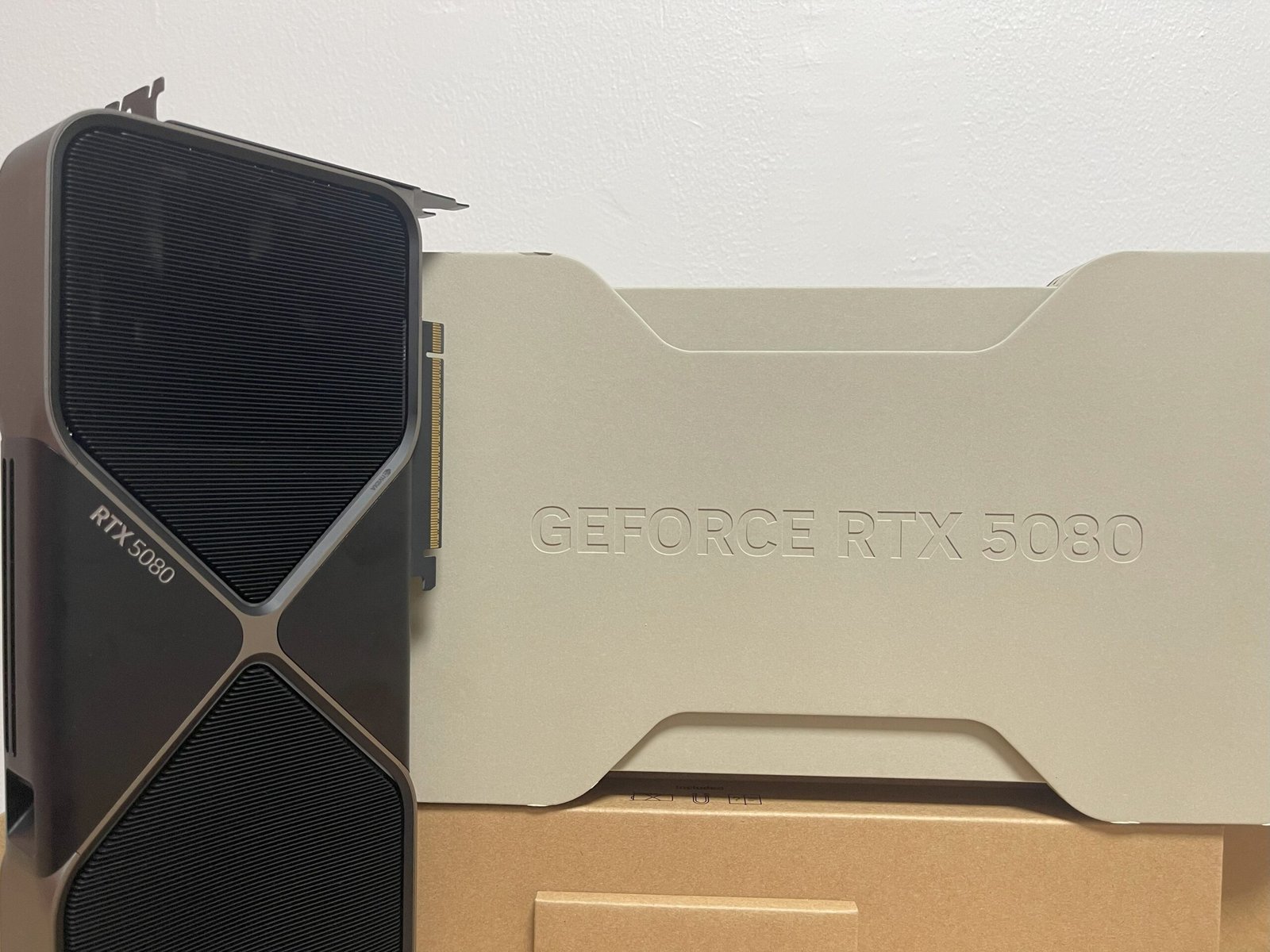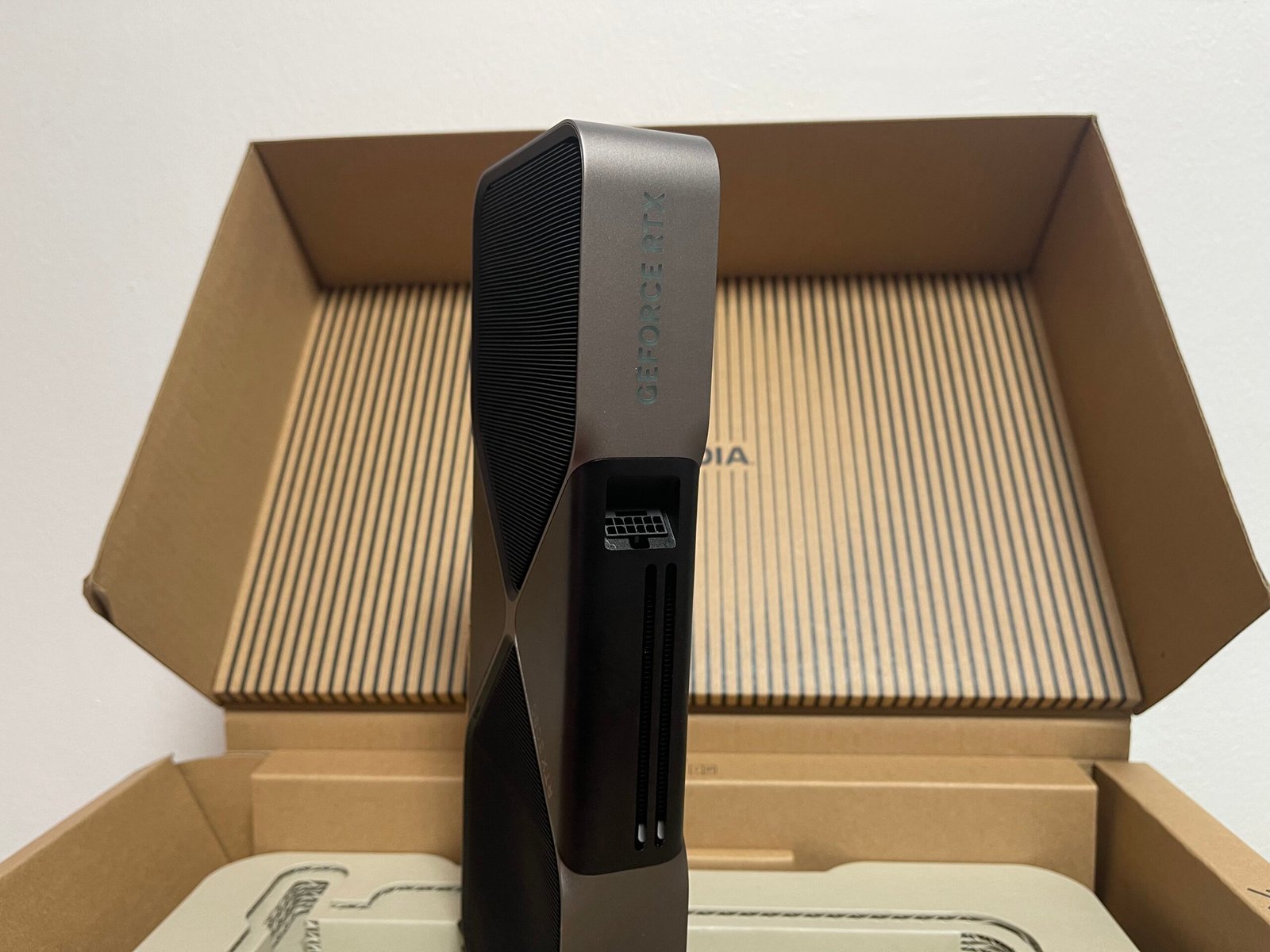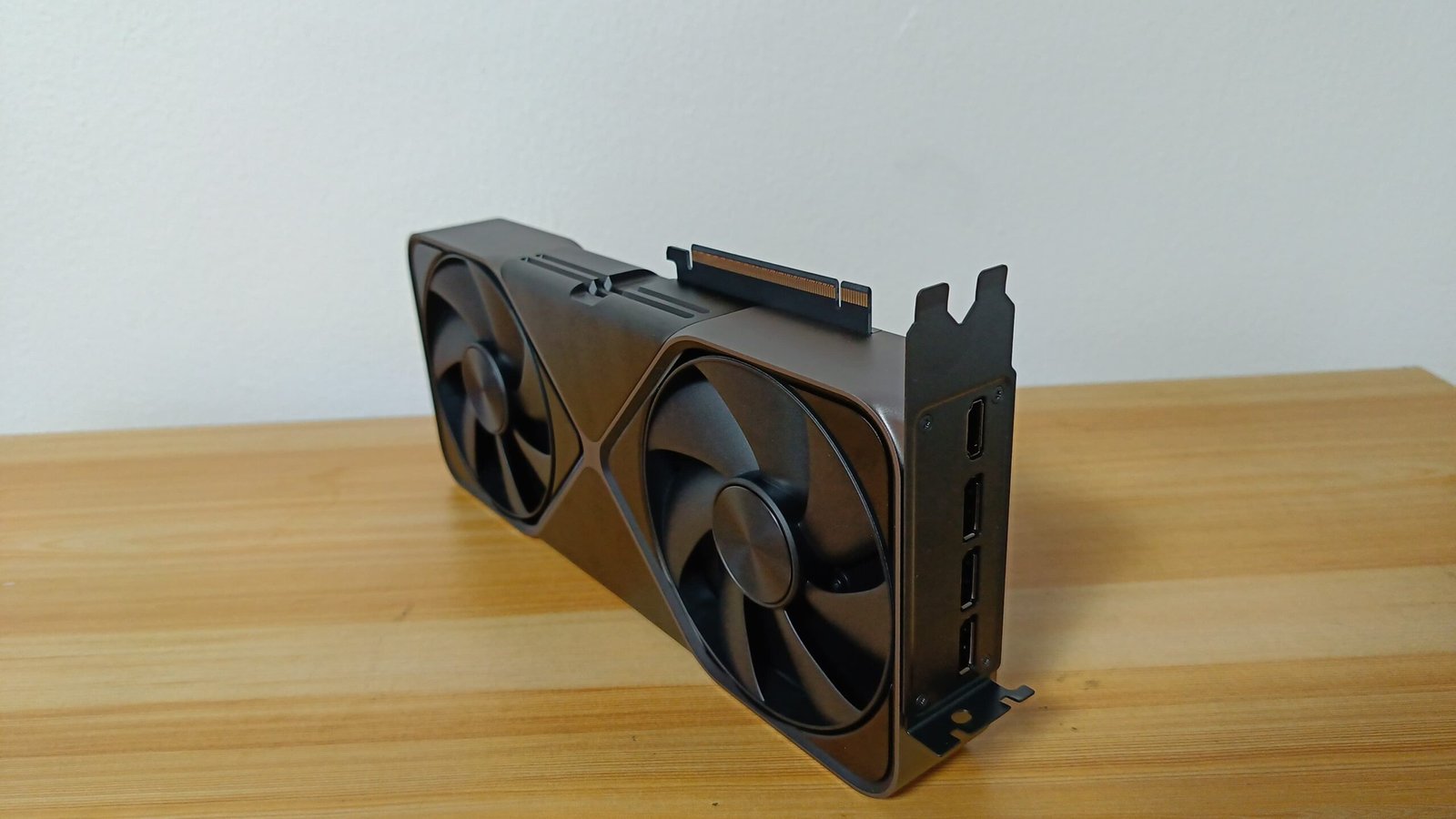Review and assessment of the NVIDIA GeForce RTX 5080 FE cards

The NVIDIA GeForce RTX 5080 Founders Edition represents the peak of NVIDIA power and innovation, based on the innovative Blackwell architecture; but is the card's actual selling point its ability to find the ideal mix between raw performance and seamless AI? Or does its true influence go beyond AI enhancements without making a significant change to overall performance?
What is Blackwell Architecture?
Consider a high-end computer processor with 92 billion transistors and 92 billion tiny control valves collaborating as a team. These transistors are more than just numbers; they function like a digital brain network, working together to accelerate processing. Each transistor performs a minor but significant part in performing complicated computations at lightning speed, resulting in smoother and more detailed animations and images than ever before.

The Blackwell architecture's strength rests not simply in its sheer quantity of transistors, but also in how these components are employed to assist AI technologies. This remarkable processor can execute over 3.352 trillion AI operations per second, making it ideal not just for high-end games with rapid frame rates and visuals, but also for applications requiring deep data analysis and machine learning.
Tensor Cores with 5G: the pulse of AI.
This architecture is built around sophisticated 5th generation Tensor cores, which serve as the "brains" of onboard AI. These cores are built on FP4 precision technology, which stores data in only four bits, allowing for faster deep learning and training of big models. The end effect is a huge increase in visual quality and detail, whether in games or creative applications.
Ray tracing with 4th-generation RT cores
Because producing realistic visuals is a crucial aim, the 4th generation RT cores perform ray tracing twice as efficiently. This technology simulates natural occurrences by producing precise lighting, shadows, and reflections that imitate lifelike realism without reducing frame rate, making the viewing and gaming experience more immersive and realistic.
GDDR7 Memory: Super Data Flow.
Amazing performance requires rapid memory, which is where GDDR7 memory comes in. It can achieve transfer rates of up to 30 Gbps and bandwidth of up to 1.8 Tbps. This means you can watch 8K films and modify 3D sequences without experiencing any latency or slowness.
DLSS 4 and Neural Rendering: redefining render quality.
DLSS 4 transforms rendering by integrating multi-frame generation techniques with powerful AI. It is based on a sophisticated neural model called "Transformer," which analyzes each pixel in the image, determining its importance, reducing ghosting, and improving image stability even in dynamic or complex lighting scenes. The end result is high-resolution images with high refresh rates and superior visual quality, without excessive memory consumption.

Because upgrading older games and applications can be difficult, NVIDIA has introduced DLSS Overrides, a feature that allows users to simply alter DLSS settings using the NVIDIA app, ensuring that older games benefit from the enhancements without the need for major upgrades.

Technical characteristics for the NVIDIA GeForce RTX 5080 FE graphics card:
Chip number: GB203.
Memory type: GDDR7.
Total number of transistors: 45.6 billion.
Manufacturing technology: 5 nm.
CUDA cores: 10,752.
Tensor Cores: 5th Generation, 1801 AI cores.
RT Cores: 4th generation, 171 cores.
VRAM speed: 30 Gbps.
VRAM capacity: 16 GB.
Memory interface: 256 bits.
Bandwidth: 960 Gbps.
Base frequency is 2.30 GHz.
Maximum frequency is 2.62 GHz.
Power consumption: 360 watts.
The RTX 4080 is based on the Ada Lovelace architecture and uses the AD103 chipset, which is also 5 nm, but uses the PCIe 4.0 interface, making it slower to transfer data than its newer counterpart. The RTX 5080 FE, on the other hand, is based on the 5nm GB203 chipset, which provides exceptional power efficiency with new technologies like PCIe 5 support for faster data transfers.

The RTX 5080 FE has 45.6 billion transistors, while the RTX 4080 has closer to 45.9 billion, indicating the chip's ability to process data. Despite the numerical similarity, the difference in architecture and technology used affects the overall performance and power distribution of each card.
The RTX 5080 FE boasts a total of 171 fourth-generation RT cores, as well as 10,752 CUDA cores for superior graphics performance and 1801 fifth-generation Tensor cores for high-efficiency AI and deep learning applications. Ray tracing technologies have also been improved to provide more realistic lighting and shadows.
The RTX 4080 features 9,728 CUDA cores, which is good but fewer than the RTX 5080 FE, and 304 4th generation Tensor cores, which are useful for AI applications. It also includes 76 3rd generation RT cores, which makes it less capable of ray tracing than the newer model.

The RTX 4080 and RTX 5080 FE have different memory types and speeds. The RTX 4080 has 16GB of GDDR6X memory running at 22.4Gbps, while the RTX 5080 FE has 16GB of GDDR7 memory running at 30Gbps over a 256-bit interface, resulting in a data transfer rate of around 716.8GB/s. This performance difference is noticeable when dealing with applications that require a lot of data.
The RTX 5080 FE has a base frequency of 2.30 GHz and a boost to 2.62 GHz, resulting in fast responsiveness and superior performance in graphics environments. The RTX 4080 starts at 2.205 GHz and can go up to 2.505 GHz, which puts it in a good position but falls short of the RTX 5080 FE's speed.
The RTX 5080 consumes around 360 watts, indicating its ability to deliver high performance, while the RTX 4080 consumes around 320 watts, making it a more energy-efficient option.
NVIDIA GeForce RTX 5080 FE Technical Testing Session:
Design:
The card is built with a durable metal chassis that features a black finish with elegant copper accents, giving it a modern yet luxurious look. This chassis is not only aesthetically pleasing, but it also provides the rigidity and durability to withstand heavy use. The streamlined design also reflects NVIDIA's philosophy of combining beauty and function, improving heat distribution within the card while maintaining its attractive appearance.

The RTX 5080 FE is distinguished by a new cooling system that has been developed to keep up with the card's high performance. The cooling system is based on two large fans that use Flow-Through technology, which draws cold air in from the bottom and expels it upwards inside the chassis. This technology improves airflow and reduces noise levels thanks to the "Whisper Mode" technology.

While the card's design language remains consistent with previous Founders Edition models, NVIDIA has made several improvements to make the card more functional. The RTX 5080 has a new design that reduces its footprint compared to some previous models with 4K resolution. occupy three slots, making it easier to install in PC cases with limited space and improving airflow within the system.

The card comes with an adapter that allows three PCIe 8-pin cables to be connected and converted to fit the 12VHPWR connector, allowing for greater flexibility in power management and distribution. The subtle LED lighting around the card's edges and logo adds a modern touch without being visually overwhelming, keeping with the minimalist approach to design.
Ports:

The NVIDIA RTX 5080 FE has a number of advanced ports that enhance the viewing experience, including three DisplayPort 2.1b ports that support 4K resolution at a refresh rate of up to 480 Hz and enable the operation of 8K displays at a rate of 165 Hz using DSC signal compression technology. Additionally, the HDMI 2.1b port has advanced support that allows connecting modern TV screens and high-resolution gaming monitors with clear and sharp
Cooling:
The card comes with a cooling system that aims to keep temperatures low even when running at full power, which is important because high temperatures can negatively impact performance and stability. Here, two fans work in tandem with Double Flow-Through technology, each of which draws cool air from the bottom of the card and then expels this hot air upwards into the computer case. This method ensures better heat distribution across the surface of the card, reducing

A metal back cover not only adds a stylish look to the card, but it also helps dissipate the accumulated heat, keeping the internal components within a safe thermal range. Whisper Mode technology is integrated into the fan operation to reduce the noise level produced by the fans, allowing the fans to operate at high efficiency without making a loud noise, resulting in a quieter user experience without sacrificing cooling capacity.
Energy:
The NVIDIA RTX 5080 FE operates at up to 360W, requiring a power system with at least 850W to ensure efficient and stable operation during high performance. The card's design comes with improvements to the power connector, as the angle of the connector has been modified to facilitate installation in computer cases with tight spaces, in addition to using more flexible and high-quality cables compared to previous generations, which contributes to the even distribution.

Although its power consumption is higher than that of previous generations of cards, it ensures stable performance and protects internal components, making it an excellent choice for those seeking a balance of superior performance and efficient power management.
Performance tests:
We ran a series of tests on two different machines, one with high specifications to ensure the card was used to its full potential and the other with moderate specifications to see how it coped with different operating environments. We didn't want to leave a card with such high performance unexplored, so we pushed it beyond 2.62GHz to discover its true limits. The tests included running heavy programs and the most recent games.
In all testing, we used the following device specifications to test the card:
Motherboard model: ROG Z890 Maximus Hero.
Processor: Intel Core Ultra 9 285K.
Cooler: Ryujin III 360 Extreme.
RAM: Kingston Fury DDR5 16GB x 2.
Power supply: TUF 1000W Gold.
The minimal device specs, given that it is a PCIe 4, and we conducted some testing on it:
Motherboard: ASUS Prime B760M-K.
Processor: Intel Core i5-12400F.
Memory: Corsair Vengeance DDR5 5200 MT/s CL40 16 GB.
Power Supply: XPG Core Reactor II VE 750W Gold.
Game tests:
Cyberpunk 2077
Alan Wake II
Hogwarts Legacy
Hogwarts Legacy was tested at maximum settings with ray tracing at 4K and performed admirably, with considerable increases when DLSS was enabled.
4K resolution. Native, the game recorded 43 fps, which is decent but may not be perfect for intense situations; with DLSS Quality + 4x MFG enabled, performance increased to 135 fps, resulting in a smooth gaming experience with ray tracing.
Star Wars Outlaws
Star Wars Outlaws was tested at maximum settings at 4K with ray tracing, and while the game initially performed poorly at native resolution, DLSS technology substantially improved performance.
4K resolution
When running the game at 4K native, performance was poor at 25 fps, which might affect the smoothness of the experience. However, when DLSS Quality + 4x MFG was activated, performance increased to 126 fps, making it much more enjoyable.
Experience summary
The RTX 5080, despite its cutting-edge AI, does not quite live up to the raw performance hype. The design leverages smart technologies like DLSS 4, which delivers noticeable visual improvements—such as effectively eliminating ghosting—but at the expense of the card's base performance.
Tests on a PCIe 4.0 device with a low-power processor also demonstrated performance. However, when the 4x setting is enabled, the card generates artificial frames (such as MFG) to compensate for the lack of real-world performance.

This brings up the basic query: "Does this mean that we are on the verge of bidding farewell to the era of traditional raw performance improvement and will witness in the future a development limited to artificial intelligence?"
This trend may indicate that graphics card manufacturers see AI as the key to achieving better efficiency and an enhanced visual experience, even on limited hardware. Rather than increasing component power, the focus is now on leveraging smart algorithms to compensate for differences and deliver performance that appears to be better through sophisticated calculations.
On the one hand, some users see this approach as a positive step that allows for a smoother gaming experience and high visual quality without the need for large investments in hardware. On the other hand, users raise questions about the possibility of relying entirely on artificial intelligence, as performance without activating such technologies does not achieve the same level required, leaving the user with an unavoidable choice: activate artificial intelligence.
Ultimately, the future of graphics card development cannot be said to be limited to AI improvements alone; the likely scenario could include a mix of both intelligent and physical improvements. However, the current trend shows a clear shift toward adopting intelligent solutions to enhance the overall experience, raising concerns about the possibility of radical improvements in raw performance in future generations without the support of AI technologies.
Design—8
Manufacturing materials—8
Performance—6
Cooling—8
Artificial Intelligence Technology—7.5
7.5
Good
The RTX 5080 FE offers significant visual improvements and higher frame rates thanks to DLSS 4, but it doesn’t deliver a real jump in raw performance. It relies heavily on frame generation to compensate for the lack of real power, making for a smooth experience but not based on actual physical improvements.

